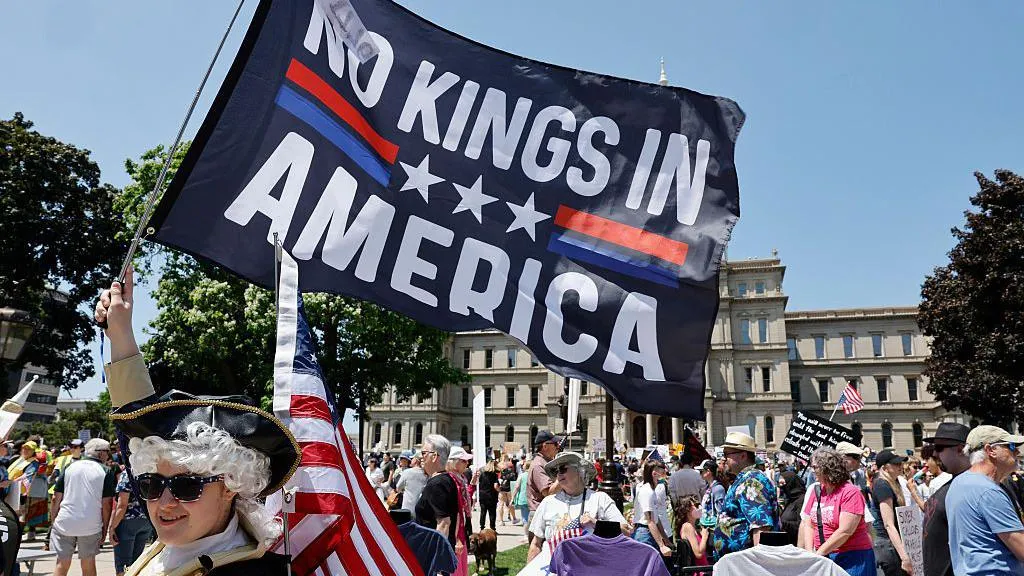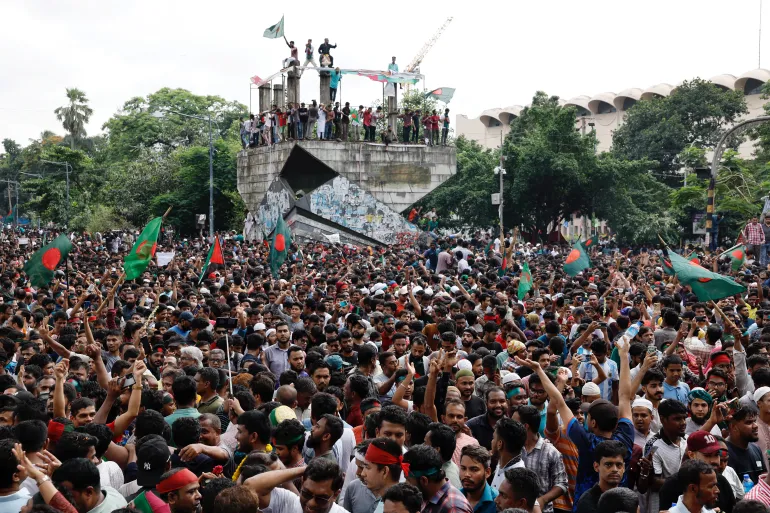A Nation at a Crossroads: Unity or Fracture?
Table of Contents

Picture this: on one side, a sea of American flags waves under a gray sky, voices chanting for democracy in cities from coast to coast. On the other, tanks rumble through Washington, D.C., as military bands play and President Donald Trump salutes. On June 14, 2025, the United States was a nation split—vibrant with dissent, yet shadowed by tension. This was no ordinary day; it was a collision of ideals, sparked by a rare military parade and fueled by outrage over Trump’s hardline immigration policies.
The Core Update: Protests Erupt Nationwide
The “No Kings” movement, a coalition of over 180 progressive organizations including Indivisible, the ACLU, and local activist groups, orchestrated protests in over 2,000 towns and cities across all 50 states, drawing an estimated 3.5 million participants. The demonstrations countered Trump’s extravagant military parade in D.C., held to celebrate the U.S. Army’s 250th anniversary and his 79th birthday. The parade, featuring thousands of soldiers, dozens of tanks, and flyovers by F-35 jets, was overshadowed by days of unrest, particularly in Los Angeles, where protests against Trump’s deportation raids turned violent. This marked the largest anti-Trump mobilization since his re-inauguration in January 2025, surpassing even the Women’s March of 2017 in scope.
Global Impact: A World Watches
The “No Kings” protests reverberated globally, with solidarity rallies in London, Mexico City, Berlin, and Toronto drawing thousands. In Mexico, where Trump’s deportation policies have expelled over 150,000 migrants since January, protests outside the U.S. embassy highlighted strained bilateral ties. European leaders, including German Chancellor Anna Schmidt, expressed “deep concern” over the parade’s militaristic optics, drawing parallels to authoritarian regimes. The $25-45 million event, funded partly by diverting Pentagon training budgets, prompted criticism from NATO allies about U.S. priorities. Economically, the deportation program has disrupted U.S. industries like agriculture and construction, with California’s Central Valley reporting a 15% labor shortage, pushing up food prices by 3% nationwide.
Future Forward: What Lies Ahead?
The “No Kings” movement is poised to reshape American politics. Organizers are already planning voter registration drives and targeting swing districts for the 2026 midterms, aiming to flip Congress. If Trump’s immigration agenda—deporting 3,000 migrants daily, with plans to expand detention centers—continues, experts predict urban unrest could escalate, particularly in sanctuary cities like Los Angeles and Chicago. The economic toll may widen, with estimates suggesting a $200 billion GDP hit by 2027 if labor shortages persist. Yet, a CBS/YouGov poll shows 54% of Americans approve of Trump’s deportations, with 53% believing he prioritizes “dangerous criminals,” bolstering his base. The parade’s militaristic tone, coupled with Trump’s warning of “heavy force” against protesters, raises fears of normalized military involvement in domestic affairs. Could this be a glimpse of a more authoritarian America by 2030?
The Human Angle: Stories from the Streets
In Philadelphia’s Love Park, Karen Van Trieste, a 61-year-old nurse, clutched a sign reading “Defend Democracy.” She told reporters Trump’s cuts to the CDC, slashing its budget by 20%, left her hospital understaffed during a recent flu outbreak. “This isn’t just politics; it’s lives,” she said. In Los Angeles, Jose Azetcla, a 34-year-old Brown Berets member, marched despite tear gas near the Federal Building, condemning family separations as “evil.” His cousin, a DACA recipient, faces deportation next month. Meanwhile, at the D.C. parade, Vietnam veteran Melvin Graves, 73, stood proud. “I got no welcome home in ’69,” he said. “This honors those who served, not just Trump.” Young veteran Brian Angel, 29, who served in Korea, called for more parades: “Our troops deserve this.” These voices—protester, veteran, citizen—paint a nation grappling with its soul.
The Controversy: Parade or Power Play?
The parade, costing $25-45 million, drew sharp criticism. Former General Mark Schwartz called it a “costly vanity project,” noting the Army diverted funds from veteran healthcare programs. Security expert Barbara Starr highlighted the unease of soldiers marching in D.C. while National Guard troops clashed with protesters in L.A. Trump’s deployment of 2,500 Guardsmen against California Governor Gavin Newsom’s wishes intensified local anger. In Minnesota, “No Kings” events were canceled after flyers linked to the protests were found in the car of a suspect in a politician’s murder, prompting Governor Tim Walz to urge restraint. Yet, thousands still marched, undeterred. Supporters, however, saw the parade as a patriotic triumph. “It’s about our heroes,” said attendee Sarah Collins, a Virginia teacher whose son serves in the Marines.
Why It Matters: Democracy on the Line
The “No Kings” name reflects fears that Trump’s second term has eroded democratic norms. His executive orders bypassing Congress on immigration and his pardon of allies convicted in 2020-related cases have fueled accusations of overreach. Yet, his policies resonate with many: 42% of Americans feel safer under his deportation program, per CBS/YouGov. This divide—between those who see Trump as a defender of order and those who view him as a threat to liberty—defines America’s current chapter. The protests and parade are not just events; they’re a mirror of a nation at a tipping point.
Engage With Us
Where do you stand on this fractured day? Do the “No Kings” protests signal hope for democracy, or are they a distraction from necessary reforms? Is the parade a tribute to service or a step toward something darker? Drop your thoughts below!
Disclaimer: This article reflects reported events and diverse perspectives, not the opinions of this publication. Content is based on verified sources and aims to inform, not advocate.
Sources: BBC News, Associated Press, CBS/YouGov, Los Angeles Times, Reuters, The Washington Post




